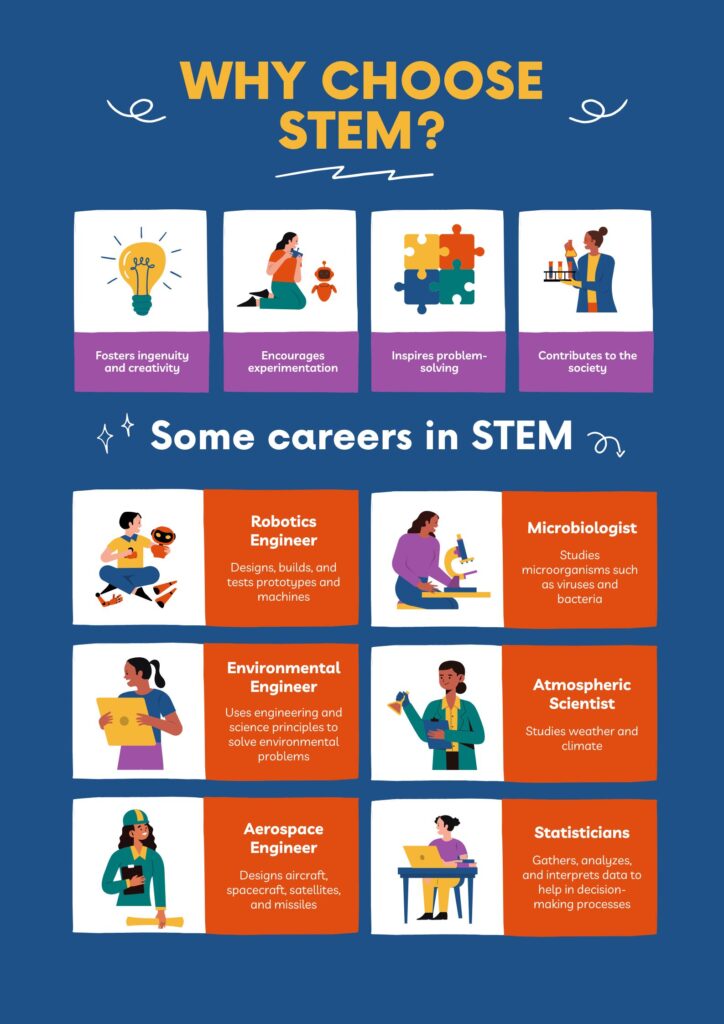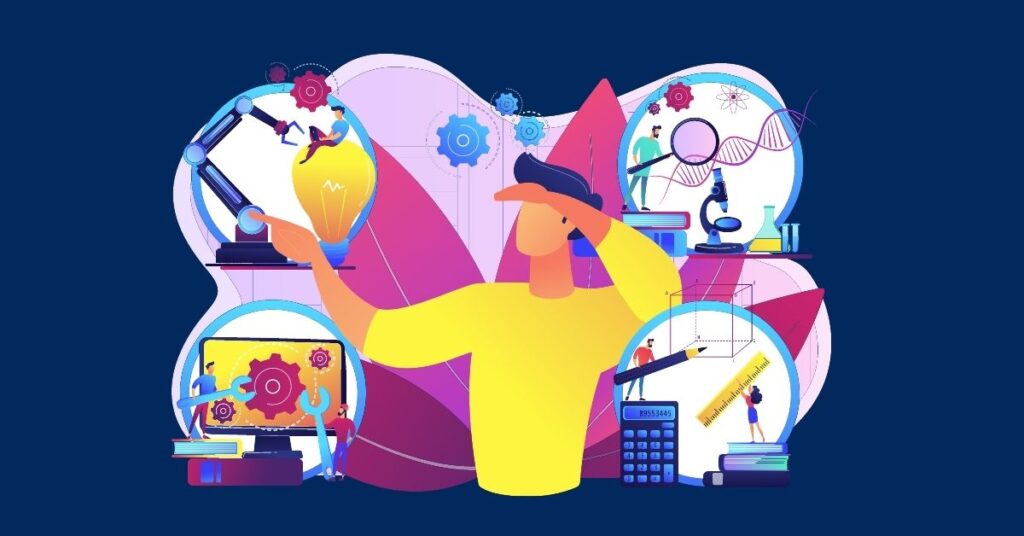STEM education, an acronym for Science, Technology, Engineering, and Mathematics, has gained significant recognition in recent years because of its ability to prepare students for the challenges of the modern world.
In an increasingly technology-driven society, the need for individuals skilled in STEM disciplines has become paramount. STEM education aims to equip students with the knowledge and skills to excel in these fields.
By fostering critical thinking, problem-solving, and innovation, STEM education plays a vital role in shaping the future workforce. In this article, we will explore the importance of STEM education, discuss its pros and cons, and delve into how it can be effectively promoted.
What is STEM Education?
STEM education encompasses a multidisciplinary approach to learning, integrating concepts from science, technology, engineering, and mathematics. It emphasizes practical applications, hands-on experiences, and real-world problem-solving.
STEM programs often involve collaborative projects and encourage students to think critically and creatively.
Importance of STEM Education
We can imagine the importance of STEM education in the following points:
- Enhancing Critical Thinking Skills
- Encouraging Problem-Solving Abilities
- Fostering Creativity and Innovation
- Developing Collaboration and Communication Skills
STEM education focuses on developing critical thinking skills. Students engage in activities that require analysis, evaluation, and decision-making. By exploring complex problems, they learn to think logically and develop the ability to apply scientific methods to find innovative solutions.
STEM education nurtures students’ problem-solving abilities, an essential skill in various aspects of life. By exposing students to challenging scenarios and guiding them through the problem-solving process, STEM programs enable learners to tackle real-world problems effectively.
Creativity and innovation go hand in hand with STEM education. Students are encouraged to think outside the box, explore new ideas, and find unique solutions.
Collaboration and communication are integral to STEM education. Group projects, team-based activities, and presentations foster effective communication skills and teach students the value of collaboration.
Pros and Cons of STEM Education
There are many types of education like art education, Physical, Informal, and many others. STEM education offers many benefits that contribute to both personal and professional growth. Let’s explore some of the key advantages of STEM education.
1. Increased Job Opportunities
Professions in STEM fields are in high demand and offer a wide range of career opportunities. By pursuing STEM education, students open doors to lucrative and fulfilling careers in areas such as engineering, computer science, healthcare, environmental science, and many more.
2. Higher Earning Potential
STEM careers often provide higher earning potential compared to non-STEM fields. The specialized skills and expertise gained through STEM education make individuals valuable assets to organizations, leading to increased salary prospects and job stability.
3. Preparation for Technological Advancements
Technological advancements are rapidly transforming various industries. STEM education prepares students with the knowledge and skills necessary to adapt and thrive in this evolving landscape.
By staying abreast of technological developments, STEM-educated individuals remain competitive in the job market.
4. Bridging the Gender Gap in STEM Fields
Historically, women have been underrepresented in STEM fields. STEM education plays a vital role in addressing this gender disparity by encouraging girls to pursue STEM subjects and careers.
By promoting inclusivity and diversity, STEM education helps create a more balanced and fair workforce.

Cons of STEM Education
While STEM education offers numerous benefits, it also faces some challenges and limitations. It is important to acknowledge the potential downsides:
5. Lack of Diversity in Curriculum
One criticism of STEM education is the lack of diversity in the curriculum. The focus on science, technology, engineering, and mathematics often leads to a neglect of humanities and arts subjects.
To ensure a well-rounded education, it is crucial to balance STEM disciplines and other fields of study.
6. Overemphasis on Technical Skills
STEM education places significant emphasis on developing technical skills, which can sometimes overshadow the importance of soft skills.
While technical proficiency is essential, students also need to cultivate skills like communication, critical thinking, and creativity to thrive in the workplace.
7. Neglecting Humanities and Arts
STEM education’s strong emphasis on science and mathematics can inadvertently lead to a diminished focus on humanities and arts subjects. The arts provide avenues for self-expression, cultural understanding, and creativity, which are equally important for a well-rounded education.
8. Heavy Workload and Stress
STEM education often involves rigorous coursework and demanding projects, which can cause a heavy workload and increased stress levels for students.
It is important to ensure that the education system provides adequate support and resources to help students manage their workload effectively.
How to Promote STEM Education Effectively
Promoting STEM education requires a multifaceted approach involving educators, policymakers, parents, and the community. Here are some effective strategies:
1. Engaging Students through Hands-on Activities
Hands-on activities and experiments engage students actively in the learning process. By providing opportunities for the practical application of concepts, educators can make STEM subjects more engaging and exciting.
2. Encouraging STEM Clubs and Competitions
STEM clubs and competitions offer platforms for students to showcase their skills and interact with peers who share similar interests. These extracurricular activities promote collaboration, innovation, and healthy competition.
3. Providing Professional Development for Teachers
Continuous professional development for teachers is essential to ensure they are equipped with the latest knowledge and teaching techniques. Professional development programs empower educators to create dynamic and effective STEM learning environments.
4. Collaborating with Industries and Research Institutions
Partnerships with industries and research institutions create opportunities for students to gain real-world experiences. By engaging in internships, mentorship programs, and collaborative projects, students can bridge the gap between classroom learning and practical applications.
5. Balancing STEM Education with Other Disciplines
To address the limitations of STEM education, it is crucial to find a balance between STEM disciplines and other fields of study.
Integrating humanities, arts, and social sciences into STEM programs can foster creativity, critical thinking, and a broader understanding of the world. This interdisciplinary approach prepares students to tackle complex problems from multiple perspectives.

How does stem help students?
STEM (Science, Technology, Engineering, and Mathematics) education is beneficial for students in several ways:
Practical skills: STEM education focuses on hands-on learning, allowing students to develop practical skills such as problem-solving, critical thinking, and analytical reasoning. These skills are essential for success in various careers.
Real-world relevance: STEM education connects classroom learning to real-world applications, showing students how concepts they learn in science, technology, engineering, and math are relevant in everyday life. This helps students understand the practical importance of these subjects.
Career opportunities: STEM fields offer many career opportunities, and STEM education prepares students for these in-demand careers. It equips them with the knowledge and skills to pursue careers in fields such as engineering, computer science, medicine, and research.
How does STEM education help students?
STEM education provides several benefits to students, including:
Practical Application: STEM education focuses on real-world applications of science, technology, engineering, and mathematics. It helps students understand how these subjects relate to everyday life and equips them with practical skills that can be applied in various contexts.
Critical Thinking and Problem-Solving: STEM education fosters critical thinking skills by encouraging students to analyze problems, evaluate evidence, and develop logical solutions. It trains them to approach challenges systematically and think creatively to find innovative solutions.
Collaboration and Communication: STEM education often involves collaborative projects and activities that require teamwork. Students learn how to effectively communicate their ideas, work in teams, and appreciate diverse perspectives. These skills are essential in the modern workplace.
what are the disadvantages of stem education?
While STEM education offers many benefits, there are also some potential disadvantages to consider:
Narrow Focus: STEM education places a significant emphasis on science, technology, engineering, and mathematics subjects, which may cause a reduced emphasis on other areas of education, such as arts, humanities, and social sciences. This could limit students’ exposure to a well-rounded education and a broader range of skills.
Heavy Workload: STEM education often involves rigorous coursework and demanding projects. Students may face a heavy workload, which can lead to stress and burnout if not managed effectively.
Balancing multiple STEM subjects and maintaining a healthy work-life balance can be challenging.
Conclusion
STEM education is of paramount importance in today’s technologically driven world. By enhancing critical thinking skills, fostering problem-solving abilities, encouraging creativity and innovation, and developing collaboration and communication skills.
STEM education equips students with the tools they need to succeed in the future. While it has its pros and cons, balancing STEM and other disciplines is crucial for a comprehensive education that prepares students holistically for the challenges they may face.

